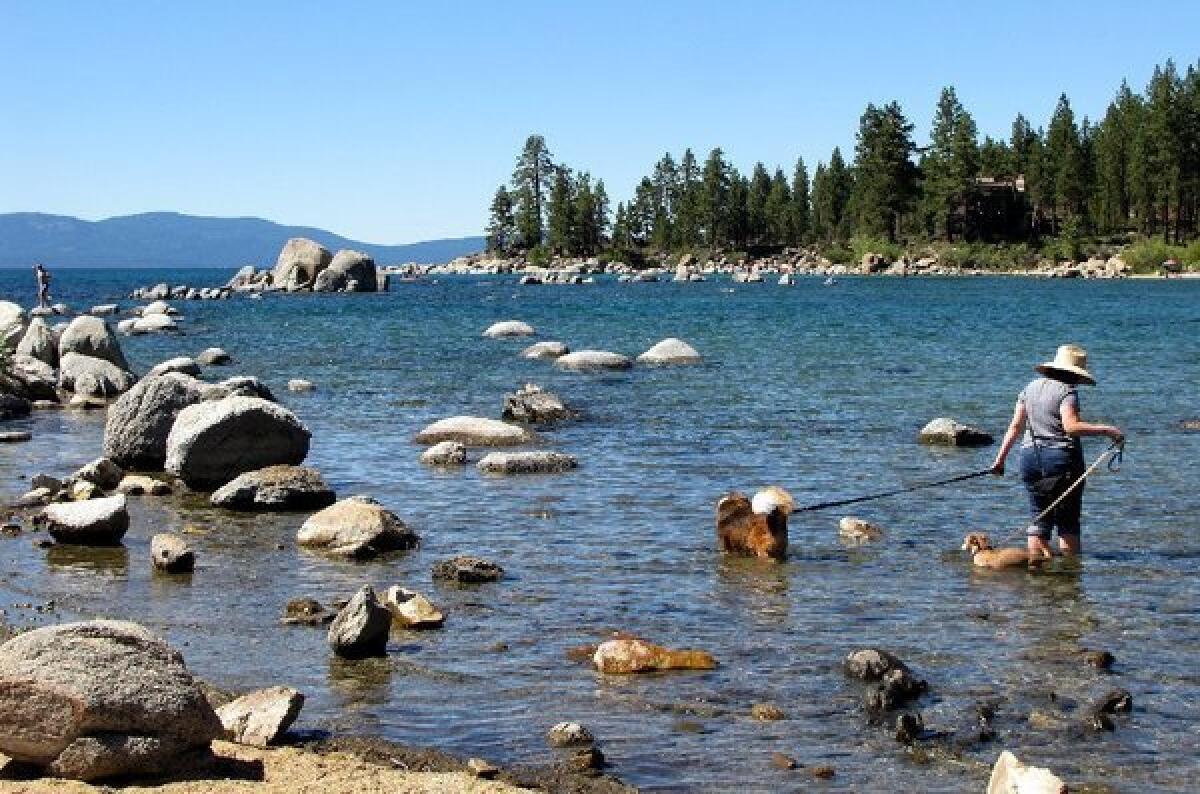Tahoe pact is a win for the lake, not Nevada [Blowback]

The Times’ characterization in its Sept. 15 article on the agreement between California and Nevada on development at Lake Tahoe as a win for Nevada reflects a misunderstanding of what occurred and what it means for environmental improvement at the lake.
The updated regional plan will result in improved air and water quality. It is supported by nearly all the stakeholders at Lake Tahoe, including the League to Save Lake Tahoe. Its policies are backed by scientific studies. And, importantly, the plan was the result of cooperation between the two governors and the bi-state governing board -- the Tahoe Regional Planning Agency -- on which I serve.
Last month, both houses of the California Legislature, a body hardly known for its subservience to other states or its lack of concern about the environment, unanimously passed SB 630 to put to rest years of controversy and division. The bill’s enactment halts Nevada’s threats to withdraw from the interstate agreement to protect the environment around the lake and supports implementation of the updated plan. Forty-five years of interstate cooperation at Lake Tahoe will continue. The assertions that California got “rolled” and that Nevada won are absurd.
ABOUT BLOWBACK: FAQs and submission policy
It is unfortunate that a small band of opponents and their lawyers get so much airtime on this issue. As The Times correctly pointed out, strict growth controls remain a centerpiece. And despite the rhetoric being tossed around, the plan does not allow high-rise towers or “glitzy” development. There are limits on the amount of tourist, residential and commercial development, as well as limits on where that development can occur. There are also scenic protection policies.
The plan focuses on replacing aging infrastructure, which research has shown is a significant contributor of fine sediment that impairs lake clarity. Furthermore, it is inconsistent for opponents to advocate for statewide sustainable community strategies that promote walkable, bike-able communities that reduce reliance on cars and reduce greenhouse gases (as they did with SB 375) but say that these smart approaches should not apply at Lake Tahoe.
The Times and its readers should look more closely at the facts. The efforts of the two states and the governing board of the Tahoe Regional Planning Agency are helping Lake Tahoe’s environment. Lake clarity has improved recently. The alternative to this agreement -- the two states going their separate ways and each taking its own approach to managing this precious natural resource -- would have resulted in calamity.
ALSO:
On letters from climate-change deniers
Another thing to admire about Janet Yellen: Her hair!
Michelle Mowery, L.A.’s bikes czar, talks to drivers too
E. Clement Shute Jr. is an appointee of Gov. Jerry Brown to the Tahoe Regional Planning Agency’s governing board, was chairman of the Regional Plan Update Committee and is current chairman of the Regional Plan Implementation Committee.
More to Read
A cure for the common opinion
Get thought-provoking perspectives with our weekly newsletter.
You may occasionally receive promotional content from the Los Angeles Times.






